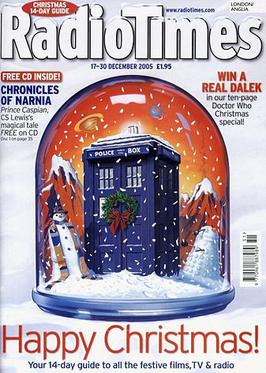
Channel 4 is a British free-to-air public broadcast television channel owned and operated by Channel Four Television Corporation. It is publicly owned but, unlike the BBC, it receives no public funding and is funded entirely by its commercial activities, including advertising. It began its transmission in 1982 and was established to provide a fourth television service in the United Kingdom. At the time, the only other channels were the licence-funded BBC1 and BBC2, and a single commercial broadcasting network, ITV.

ITV is a British free-to-air public broadcast television network that is branded as ITV1 in most of the UK except for central and northern Scotland where it is branded as STV. It was launched in 1955 as Independent Television to provide competition and reduce the current monopoly to the then BBC Television. ITV is the oldest commercial network in the UK. Since the passing of the Broadcasting Act 1990, it has been legally known as Channel 3 to distinguish it from the other analogue channels at the time: BBC1, BBC2 and Channel 4.

S4C is a Welsh language free-to-air public broadcast television channel. Launched on 1 November 1982, it was the first television channel to be aimed specifically at a Welsh-speaking audience. S4C's headquarters are based in Carmarthen, at the University of Wales Trinity Saint David's creative and digital centre, Yr Egin. It also has regional offices in Caernarfon and Cardiff. As of 2024, S4C had an average of 118 employees. S4C is the fourth-oldest terrestrial television channel in Wales after BBC One, ITV and BBC Two.

ITV Channel Television, previously Channel Television, is a British television station which has served as the ITV contractor for the Channel Islands since 1962. It is based in Jersey and broadcasts regional programme for insertion into the network ITV schedule. Until November 2011, Channel Television was one of four ITV companies independent from ITV plc alongside the two STV regions in Scotland and UTV in Northern Ireland. The station has been owned by ITV plc since 2012 and the licence was transferred to ITV Broadcasting Limited in March 2017.
Regular television broadcasts in the United Kingdom started in 1936 as a public service which was free of advertising, which followed the first demonstration of a transmitted moving image in 1926. Currently, the United Kingdom has a collection of free-to-air, free-to-view and subscription services over a variety of distribution media, through which there are over 480 channels for consumers as well as on-demand content. There are six main channel owners who are responsible for most material viewed.

Thames Television, commonly simplified to just Thames, was a franchise holder for a region of the British ITV television network serving London and surrounding areas from 30 July 1968 until the night of 31 December 1992. Thames Television broadcast from 09:25 Monday morning to 17:15 Friday afternoon at which time it would hand over to London Weekend Television (LWT).

Radio Times is a British weekly listings magazine devoted to television and radio programme schedules, with other features such as interviews, film reviews and lifestyle items. Founded in May 1923 by John Reith, then general manager of the British Broadcasting Company, it was the world's first broadcast listings magazine.

The RTÉ Guide is a television and radio listings magazine in Ireland published by RTÉ Commercial Enterprises Ltd, a subsidiary of Raidió Teilifís Éireann (RTÉ).
The history of ITV, the United Kingdom and Crown Dependencies "Independent Television" commercial network, goes back to 1955.
A regional variation generally refers to times when a radio station or television station simultaneously broadcasts different programs, continuity or advertisements to different parts of its coverage area. This may be so as to provide programming specific to a particular region, such as local news, or may be so as to allow advertisements to be targeted to a particular area.
ITV Schools was the educational television service set up in 1957 by the Independent Television Authority, broadcasting learning programmes for children ages 5 to 18 across ITV-affiliated stations. It was an example of public service broadcasting on a commercial television network.
Analogue terrestrial television in the United Kingdom was originally the method by which the significant majority of viewers in the UK, the Channel Islands and the Isle of Man received television. Analogue terrestrial television broadcasts have fully ceased in the UK with Northern Ireland being the last region to have ceased transmission analogue terrestrial television broadcasts. Northern Ireland switched off the last analogue television signals, making all of the United Kingdom only capable of receiving digital television, in the early hours of 24 October, 2012. It has been completely replaced by digital terrestrial television and other non-terrestrial means as of the end of 2012.

Television in Wales began in 1952. Initially, all programmes were in English with occasional Welsh language programmes. In 1982 Welsh language channel S4C was launched. The digital switchover happened in 2009-2010 and S4C became an exclusively Welsh language channel.
Engineering Announcements for the Radio and Television Trade, sometimes abbreviated to Engineering Announcements, was a weekly magazine of news and information intended for technicians and salespeople in the United Kingdom, produced and transmitted by the Independent Television Authority from 23 November 1970 until 31 July 1990, coming off air five months before the IBA was disbanded. Engineering Announcements began because the ITA had been getting so many queries about delays to the launch of local relays. The ITA felt that the trade should be kept informed about when stations were to open and that the best way to do this was via a television programme and as time progressed, the broadcast expanded to cover technical advances in the industry, such as the launch of satellite television and NICAM stereo, along with details of new transmitters and the scheduling of transmitter downtime.

ITV Wales and West, previously known as Harlech Television (HTV), was an ITV franchise area in the United Kingdom until 31 December 2013, licensed to a broadcaster by the regulator Ofcom.
This is a timeline of the history of the British television network ITV.
This is a timeline of the history of the British broadcaster Channel Television. It provides the ITV service for the Channel Islands.
This is a timeline of the history of the British broadcaster Thames Television and its predecessor Associated-Rediffusion. Between them, they provided the ITV weekday service for London from 1955 to 1992, after which Thames continued as an independent production company until 2003.
This is a timeline of television in London.
This is a timeline of the history of S4C, originally the fourth-oldest terrestrial television channel in Wales. Until 2010 it carried a mixture of Welsh language programmes and programmes from Channel 4 which was not broadcast on analogue TV in Wales. In 2010, Channel 4 became available in Wales on all platforms and S4C became a Welsh-language-only channel.









